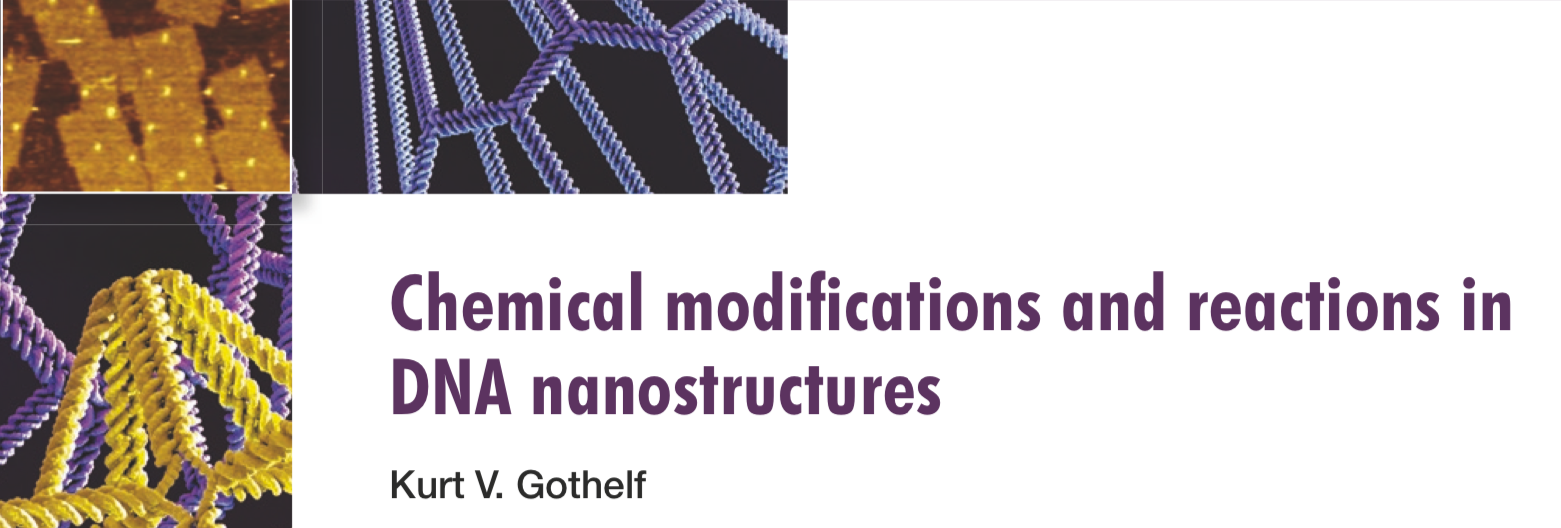PAPER: Chemical modifications and reactions in DNA nanostructures
DNA nanotechnology has the power to form self-assembled and well-defined nanostructures, such as DNA origami, where the relative positions of each atom are known with subnanometer precision.

DNA nanotechnology has the power to form self-assembled and well-defined nanostructures, such as DNA origami, where the relative positions of each atom are known with subnanometer precision. Our ability to synthesize oligonucleotides with chemical modifications in almost any desired position provides rich opportunity to incorporate molecules, biomolecules, and a variety of nanomaterials in specific positions on DNA nanostructures. Several standard modifications for oligonucleotides are available commercially, such as dyes, biotin, and chemical handles, and such modified oligonucleotides can be applied directly for integration in DNA nanostructures. In another approach, various molecules and nanomaterials have been functionalized with DNA for incorporation in DNA nanostructures by hybridization to staple strands extending from the origami structure. Multiple copies of functionalities such as hydrocarbons or steroids have been introduced to change the surface properties of DNA origami structures, either to protect the DNA nanostructure or to dock it into membranes and other hydrophobic surfaces. DNA nanostructures have also been used to control covalent chemical reactions. This article provides an introduction to chemical methods applied to DNA nanotechnology and, through examples, shows how this increases the potential of DNA nanostructures as functional nanomaterials.
Read the full article Chemical modifications and reactions in DNA Nanostructures on the MRS website
